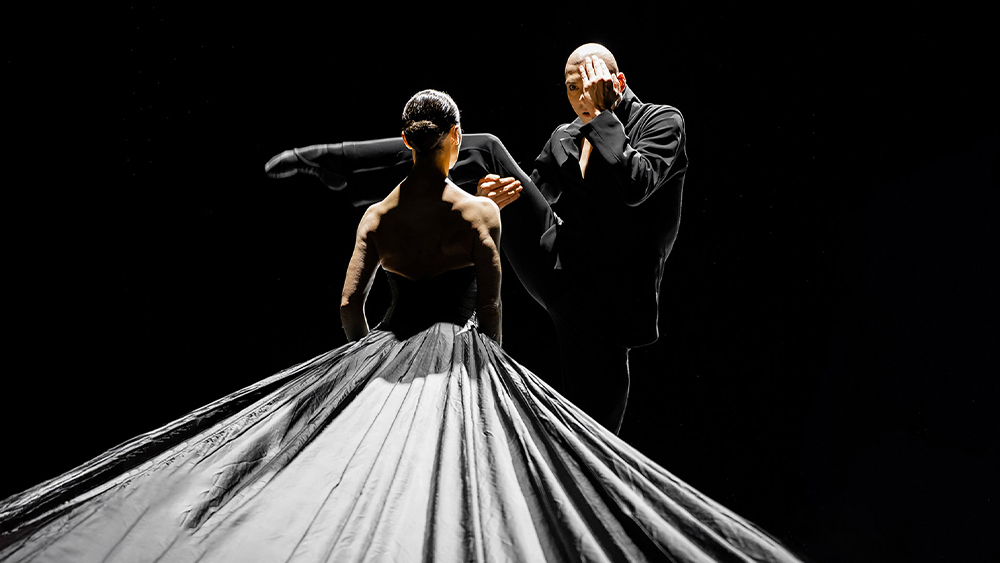The Poetry of Silent Screen
By Caroline Dickie

Sol León and Paul Lightfoot have been at the forefront of dance creation in Europe for over 35 years. They came up together at Nederlands Dans Theater (NDT), immersed in an environment of constant creation as dancers and, eventually, house choreographers. Their partnership is unique in the field, as choreographers typically pursue their own singular vision. Today Sol and Paul create independently, however they were drawn to the openness of “dialogue” over “monologue” early in their careers. From that give and take they developed a distinct language that is closer to poetry than linear storytelling.
“I’ve always been struck by the theatricality and complexity of Sol and Paul’s work, but also by the humanity that comes through their vocabulary,” says Hope Muir, Joan and Jerry Lozinski Artistic Director. “The work is uncompromising in its depth.”
Silent Screen is a powerful introduction to Sol and Paul’s style. Absent a traditional narrative, it presents as abstract, with minimal sets and a monochrome palette spiked with red. However, Silent Screen is also profoundly emotional in its evocation of the human experience. Created in 2005, it superimposes dance and silent film, probing unexpected similarities between the two. Emphasis is given to the face, whether through projected images or the dancers, whose facial expressions recall silent actors onscreen. The effect is one of a journey that expands outward like a camera lens.
“The space is getting larger and larger and that miniature world that we create at the beginning suddenly becomes the real world,” says Paul. “The real world is the theatre, which is our sacred space. We open that all up and then bring it back under the microscope.”
Paul describes his creations with Sol as “mileposts in our own lives,” referring to the personal significance they inevitably hold. He says the creation of Silent Screen coincided with a “crucial moment, a time of change, a time of letting go of being a dancer and focusing more on being choreographers.” It also marked an important partnership with a composer who is central to their canon – Philip Glass. Silent Screen even includes footage of Sol and Paul’s daughter as a child. When Sol says Silent Screen is “a little breath of life,” she captures the personal and the universal equally.
Now Silent Screen is providing a new moment of opportunity for The National Ballet of Canada, bringing Sol and Paul to the company for the first time. This has required the dancers to work differently and embrace a style that asks them to go somewhere new. “Given the path our dancers have been on with me for the past three years, this is a perfect moment for them to be immersed in such a demanding process,” says Hope. “One that insists on vulnerability, commitment to storytelling and investigation through movement. I think this will be a defining moment for The National Ballet of Canada.”
Silent Screen is onstage with Rhapsody & Body of Work November 9 – 16
Séverine Ferrolier and Vladislav Kozlov of Bayerisches Staatsballett in Silent Screen. Photo by Nicholas MacKay.